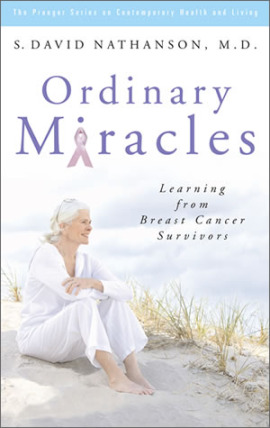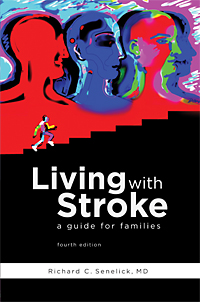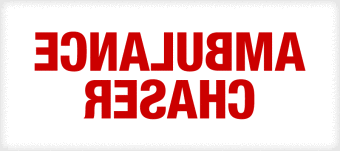 By James H. Bledsoe, MD, FACS
By James H. Bledsoe, MD, FACS
Locum Tenens can be a rewarding, if non-traditional career for the right physician.
With all of the changes that medicine is experiencing, I felt compelled to write about my time spent as a locum tenens general surgeon. My experience is probably similar to many who already are going to places where their services are needed and very much appreciated. Having said that, I must state that there are no two physicians that have the exact same reasons to do locums nor are all of the assignments the same.
After serving two years in the Air Force, assigned to a regional hospital, I started private practice in Arkansas in what was a small community hospital in 1976. I was there for a year and a half before moving to a larger community hospital. Even though the hospital had only 165 beds, it was a very well run institution with great services. As a general surgeon, I was called on to perform major vascular and thoracic cases. My associates and I were repairing abdominal aortic aneurysms – both elective and ruptured. During that time we performed three distal spleno- renal shunts for bleeding esophageal varices. On two occasions we performed extra-anatomical grafts for infected aortic grafts. Some of the many thoracic procedures included pneumonectomies and esophageal resections. Since I was responsible for the patients’ follow-ups, I can state with certainty that with very few exception these patients did well.
During these years, we had a significant number of major trauma victims and unless they had a bad head injury we took care of them. I will not dwell any more on the types of surgical cases I was involved in, but suffice it to say it was varied and many patients were involved. Early on we had no blood bank or arteriography capabilities. The arteriograms were done in a facility 25 miles away and we obtained blood from the blood bank 75 miles away. No ultrasounds were available much less MRI nor CAT scans which came later. Discussion of the logistics involved under these circumstances is for a later date.
In my own personal practice I was starting to stay more with strictly general surgery which by now included laparoscopy. Vascular and thoracic surgeons were starting to open practices in our area so the decision to limit doing these cases was much easier.
Also, the politics in medicine was becoming a real issue. Physician practices and hospitals were being bought up and this created awkward situations for referring doctors to send patients to a specialist outside their network. Referral lines that had been present for years were disrupted. In short, instead of medicine being in large part a ministry it was becoming business. Physicians were now working for their respective corporations - not their patients. I am not necessarily saying that this is altogether a bad thing but it was quite different.
Another factor in my life was that my children were now married. My oldest son is an Emergency Medicine physician working in Alabama, my other son is a surgeon working in Louisiana, and my daughter is on maternity leave as an attorney for a law firm specializing in malpractice defense.
The factors mentioned plus I am trying to slow down all played roles in my decision to look for a change. Locum tenens appeared to be a viable possibility. It certainly seemed better than retirement.
I knew very little about locums so I had a lot of learning to do. Still I was so certain that I was ready to change courses that I stopped my private practice and began my research. I signed on with two locums companies and within weeks I started assignments with them. My first assignment was in New Hampshire and I was able to start immediately because in this state you can get a temporary license. (Not all states have this provision and in most states it takes as long as six months to receive a license so it is wise to be proactive so that you can keep gaps in your work schedule at a minimum.) Since I am classified as an independent contractor, I must with hold my own taxes. I do this by having a separate bank account and pay my quarterly taxes out of this. Also, I have to have my own personal health insurance. At the onset of my locums career this latter was daunting but it worked out by looking at all of the options.
All of the locums companies I have signed on with have similar pay scales. They all cover your travel expenses and malpractice premiums. Speaking of malpractice coverage, I had to pay for my tail which consisted of one year’s payment coverage that I had with my old company and the locums group covers me while I work for them. I had one lawsuit filed against me in my 29 years of practice before locums and it was dismissed with my insurance company not having to pay anything. However, just the fact that I had a suit filed against me was a red flag in all of my applications. I had to document everything. What I am saying is that malpractice issues may not preclude a physician from working as a locums provider but it will be a big issue when applying at a hospital.
The other expense is lodging and this is usually provided by the hospital where you are working. In fact, some hospitals allow their on call physicians to eat there with no charge. Basically, your overhead is very low doing locums.
Another aspect I greatly love is that you can decide if you want to work at a particular location and for how long. All of this will be decided before you arrive at a location and I can say that all parties have been very accommodating in this regard.
One thing I must strongly advise physicians in accepting an assignment is to be certain about your skills and what you ask for regarding privileges. For example, one of the small hospitals I was scheduled to work in required general surgeons be able to perform C-sections. Before I agreed to come I made it clear that I would only do C-sections as an absolute emergency. This particular hospital was isolated and in a few instances the only safe thing to do was have the best medical personnel available perform whatever had to be done.
Along the same lines, all operating rooms have some differences. It takes a little while to feel comfortable with the personnel and their capabilities. Some of the after hours personnel are not as familiar with the laparoscopic equipment, especially the instruments. Some cases have to be converted to an open procedure if for no other reason due to a safety aspect. Also, there is a wide variety in surgical instruments, not just laparoscopic, at each hospital. The larger the hospital where you are assigned, the less chance these issues become a real adventure.
I have doing locums since June 2005 and I am very glad I am doing it. It is not for everyone. If a physician still has children at home, I would not recommend it. My wife accompanies me when she can especially on long assignments. I have worked for as short a period as a weekend and as long a time as two years. I can definitely say that all of my assignments have been good with some better than others. I am licensed in six states and this is all I plan to keep current as there are plenty of opportunities to work.
Regarding the location, time, and frequency of work is pretty much the choice of the individual practitioner once you are established into the system. The more you work, the better will be your compensation. All of the locums companies pay a certain amount on a daily basis guaranteed. After six or eight hours, depending on the company and the work situation, you are paid an amount per hour overtime. Working at a Level II Trauma Hospital will pay more than a less active community hospital and obviously the more overtime accrued the more the compensation. I feel the pay structure is very fair.
In summary, for physicians who are tired of the hassle of private practice but want to stay fairly active, locums should be considered.
James H. Bledsoe,MD,FACS
Submit a guest post and be heard.
 I wonder if social media is used by a greater percentage of physicians who are looking for non-traditional or non-clinical jobs than their clinical counterparts?
I wonder if social media is used by a greater percentage of physicians who are looking for non-traditional or non-clinical jobs than their clinical counterparts?




 Post a Comment
Post a Comment





